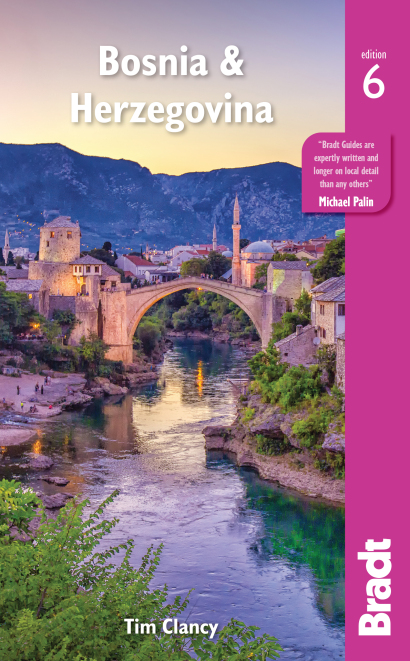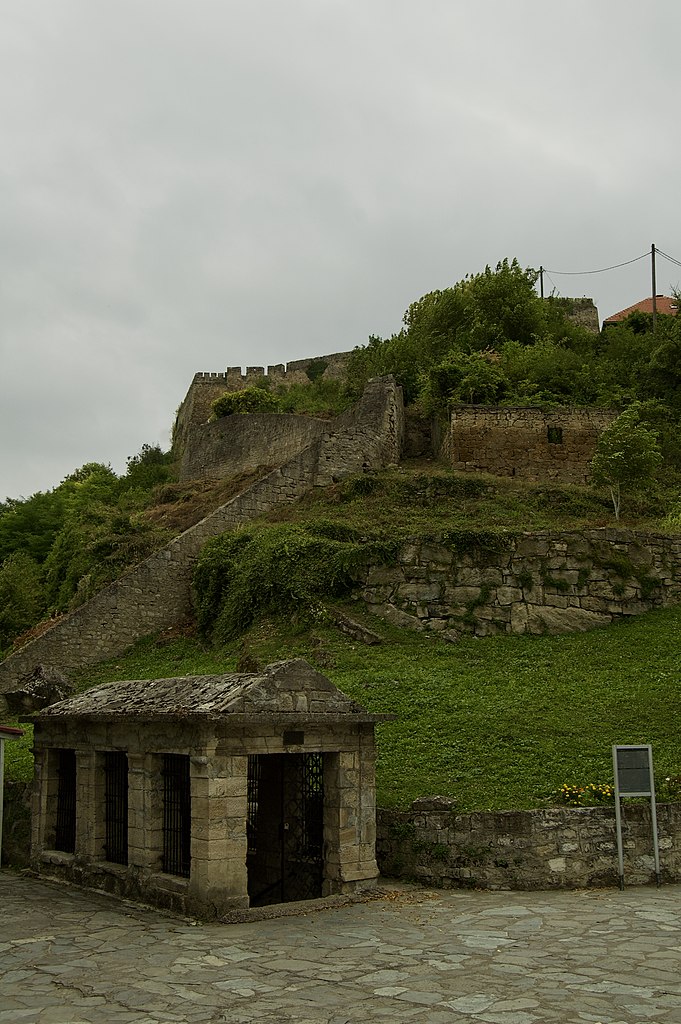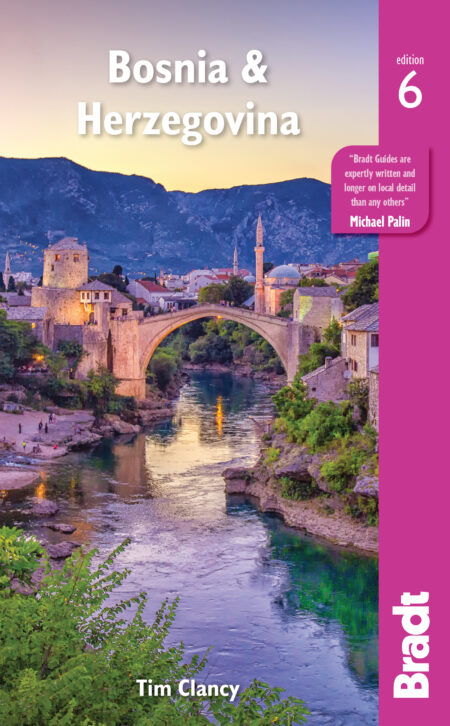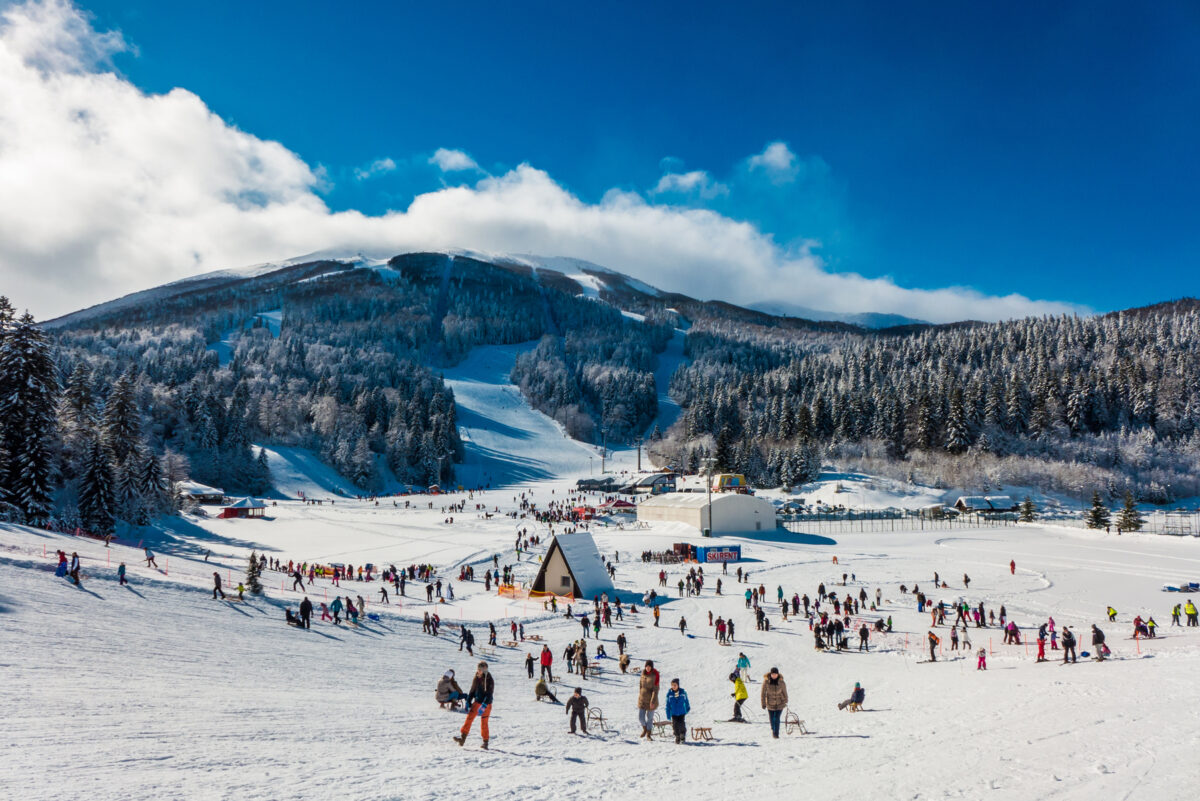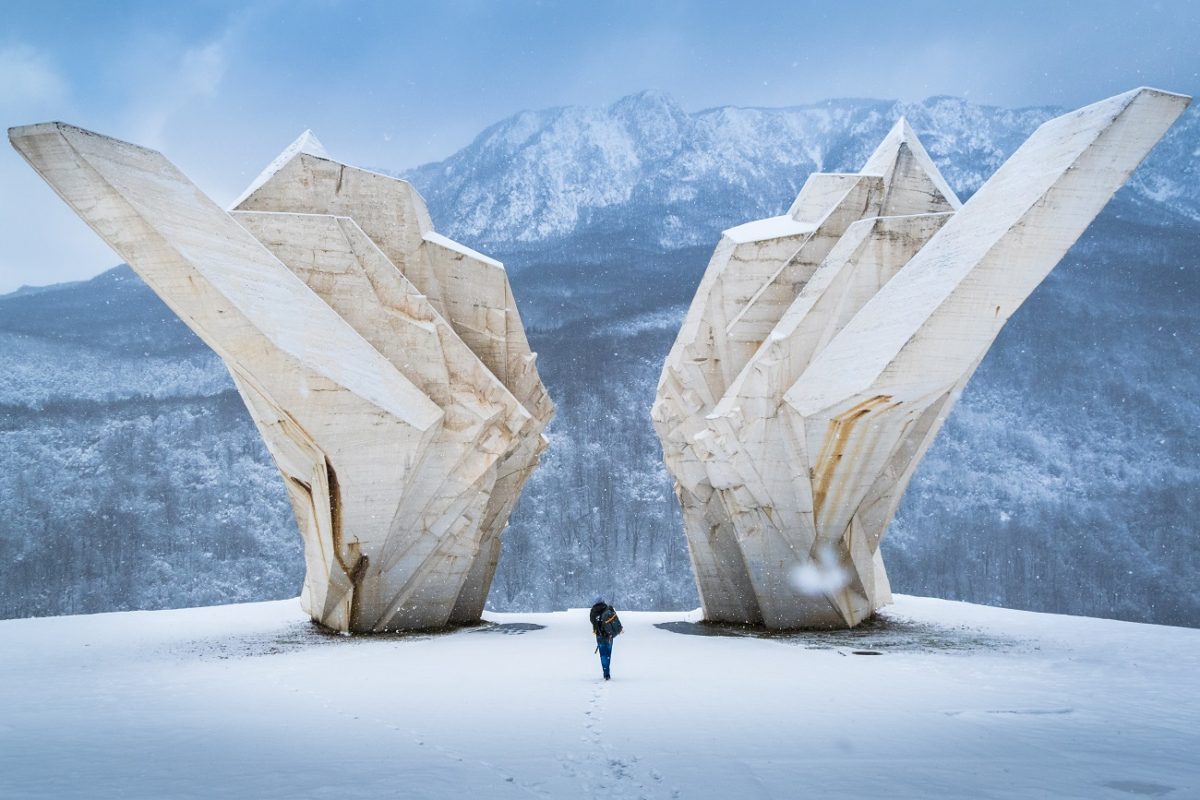It is raw. It is beautiful. It is a place that requires you to adjust to it rather than it adjusting to tourists.
Tim Clancy author of Bosnia & Herzegovina
Bosnia and Herzegovina has made tremendous strides in the tourism sector since 2004. It continues its ardent attempt to recover from the devastation brought by the conflict of the 1990s. To be honest, it still has a long way to go to adequately address the many challenges of catering to foreign visitors but it is a raw, real and heck of a lot of fun place to visit.
Have no doubt that this country will dazzle you with its natural beauty. This place is truly blessed with some of the most impressive scenery in southeast Europe. BiH will intrigue you with its melange of cultural heritage. Despite the conflict that ravaged the country in the early 1990s, you will find it to be a true crossroads between East and West.
Make no mistake, you will also get annoyed with the lack of road signs for certain destinations. Things like bus or train schedules will undoubtedly be changed, and it is near impossible to track them. Working hours of restaurants or attractions will not always be respected. A taxi driver just might overcharge you. Some of Bosnia and Herzegovina’s best places to see are only reachable by rough gravel tracks where you can easily lose your way. It’s just part of the trip.
That is Bosnia and Herzegovina. It is raw. It is beautiful. It is a place that requires you to adjust to it rather than it adjusting to tourists. To some that is frustrating, but to others it makes it a place of rare originality and authenticity.
Bosnia and Herzegovina continues to be wracked with political and economic turmoil, although this may be barely noticeable to travellers. Despite the long post-war transition, most will find BiH an attractive tourism destination with only the faint physical scars of war. Do not expect top-notch Western-style service and facilities everywhere you go, however, but do not be too surprised either if you are treated as an honoured guest in the most unexpected of places. The people of this country are warm and friendly. Your contribution as a visitor to Bosnia and Herzegovina is critical to its recovery – both economically and spiritually.
For more information, check out our guide to Bosnia & Herzegovina
Food and drink in Bosnia and Herzegovina
Food
Most hotels and pensions in Bosnia and Herzegovina offer a simple continental breakfast or small buffet with cold cuts, cheese and sometimes hard-boiled or fried eggs. Certain restaurants and cafés will offer scrambled eggs, omelettes, or pancakes but typical English, Australian or American breakfasts will be few and far between. In places like Međugorje where they are used to having ham and eggs, it is possible to find a filling brekkie. In the larger cities there will be an occasional restaurant that serves ‘English breakfast’.
All travellers should enter a buregdženica (savoury pie shop) and try the famous traditional pitta dishes of burek, zeljanica, sirnica and krompiruša at some point during their trip, although they are particularly ideal for budget travellers. They are all made from scratch and have been a traditional meal since Ottoman times. Burek is a meat pie wrapped in filo-dough; the zeljanica is made from spinach and cheese; sirnica is made from a fresh, homemade cheese; and krompiruša is diced potatoes with spices. Usually one portion (porcija) is enough to fill you and will cost around 2–3KM. You may be asked if you’d like pavlaka spread on top, a fresh cream that tastes wonderful with the pita. Thin yoghurt is also a popular drink alongside your pita.
Most meats here, whether chicken, beef, lamb or pork, are fresh from the mountainside. It is common practice to raise all animals free range, and with no added hormones or chemicals. Most people say they can taste the difference.
For those with a sweet tooth, look out for a slastičarnica: a bakery or dessert shop, which focuses on sweets such as cakes, strudel, cookies and chocolates. Sometimes they serve ice cream. Some slastičarnice offer treats made in-house, while others serve a selection from industrial bakeries.
Drink
By far Bosnia and Herzegovina’s greatest natural resource is the overwhelming quantity of the highest-quality drinking water, both fresh and mineral. Almost every town will have public fountains, particularly in front of mosques. This water is perfectly fine for drinking. Many roadside fountains were built even before Tito’s time, for foot or horse travellers. These are all underground aquifer-fed fountains – the water is deliciously cold.
The local beer is extremely cheap: a half-litre bottle is only 1KM in a shop and 2-4KM in a bar. The best local mass-produced beers are Sarajevsko, Nektar, Premium and Hercegovacko. Ožujsko is a good Croatian beer that is also produced locally. Draught beer is about a third of the standard European price. Imports are reasonably priced and are available in most bars, restaurants and cafés. Local craft brews and micro brews are slowly becoming popular among the young, hip crowd and are available in a few pubs in Sarajevo, Mostar, and elsewhere. Some are excellent. Old Bridž brewery from Herzegovina produces a reliably delicious beer.
Herzegovina has not yet become a world-renowned name in wine, but don’t be surprised if in a few years that great glass of Žilavka or Blatina that you drank while visiting is listed as one of the top new ‘third world’ wines. The winemaking traditions of Herzegovina date back to Roman times. Sharing a similar climate and topsoil as Dalmatia, the savoury reds and dry whites of Herzegovina can easily compare to some of Croatia’s finest. Ask for domestic wines like Blatina, Vranac and Žilavka from the towns of Mostar, Čitluk, Ljubuški, Stolac, Međugorje and Trebinje. The best of the best are from Gentille Winery, Nuić, Brkić, Tvrdoš Monastery wines, and Vukoje Winery.
Health and safety in Bosnia and Herzegovina
Health
Vaccinations
There are no requirements under the International Health Regulations to enter Bosnia and Herzegovina. However, it is wise to be up to date with childhood vaccinations, including tetanus, diphtheria and polio (which is given as the all in one vaccine Revaxis in the UK and lasts for ten years). Protection against measles, mumps and rubella is also recommended. Two doses of MMR given at least one month apart or a history of having had each of the diseases is sufficient.
Some travellers will be advised to protect themselves against the food- and water-borne disease hepatitis A. This is recommended for longer-stay travellers, those who will be living with friends and relatives or those visiting areas of poor sanitation.
For those who are intending to work in a medical setting or with children, or who are at risk through lifestyle, immunisation against hepatitis B is advised. Ideally, three doses of vaccine should be taken. There is a variety of schedules – the shortest being over 21 days for those aged 16 or over. Similarly, you should consider a rabies vaccine for trips of a month or more. This too is a course of three doses, which can be given over 21 or 7 days. BiH is considered to be a high-risk rabies country so all travellers should consider vaccination, particularly if you are going to be away from medical help, and definitely if you are working with animals.
To ensure a healthy trip, visit your doctor or a travel clinic at least six weeks before travel.
Safety
Despite the image of Bosnia and Herzegovina’s violent past it is actually one of the safest places in Europe. There is a very low rate of violent crime and most cases of violence are domestic. Walking the streets of any town or city at any time of day or night is a relatively safe bet, although take the usual precautions in the late evening as you would in any capital city.
The main concerns for travellers to Bosnia and Herzegovina are pickpockets on the main Ferhadija promenade and the tramways in Sarajevo and in Mostar, stray dogs, car thieves and landmines. The pickpockets, stray dogs and car thieves can be avoided by simple precautions and awareness. On trams in Sarajevo keep your purse close and your wallet in your front pocket. These people are quick and talented and you won’t even know that you’ve been had until later. Always lock your car door and if you have an alarm, engage it.
Female travellers
Bosnia and Herzegovina is considered a friendly place for female travellers, for whom it is safe to walk at late at night on your own. That does not mean there aren’t potential dangers; you should always take precautions when travelling. Avoid travelling alone if possible and it is always best to walk in lit areas. Take precautions when choosing taxis as well by using official taxi services and finding a cab at an official stand.
LGBTQ+ travellers
The Balkans, although having made significant strides in the acceptance of LGBTQ+ people, are still rather conservative, so you should take a low-key approach to travelling. If with a partner, it’s best to act as friends and present yourself as such unless in comfortable and trusted company. Be careful of public shows of affection in clubs. Reactions to LGBTQ+ people can unfortunately be provocative and there have been a few cases of violence in the past though there have been some recent positive developments.
Travelling with a disability
Although the war has created literally thousands of disabled people, access routes to buildings, pavements, street crossings and public transport pay little or no attention to the needs of the disabled. The same goes for a lot of hotels and restaurants. There will usually be a kind person to assist you but don’t count on there being disability-friendly infrastructure. It can be a frustrating experience trying to get around BiH.
Travel and visas in Bosnia and Herzegovina
Visas
All EU members are exempt from visa requirements and may enter Bosnia and Herzegovina at any time. Once the UK fully leaves the European Union, documentation requirements for UK citizens may change. Check before travelling. American and Canadian citizens are not required to have visas for entry to the country either. Bosnia and Herzegovina can only be entered with a valid passport, as the country’s border authorities do not accept any other type of personal identification.
For those countries that do require a visa, they are issued by BiH’s diplomatic missions. Visas for private travel require an application form and a certified letter of intent of a BiH citizen. This can normally be arranged through a tour operator. Business visas require an application form, an invitation from a BiH business partner and a certified letter of intent from the BiH trade office. For certain countries, visa applicants should also submit evidence of possession of cash assets, as well as HIV test results.
Entry requirements
Foreigners are required by law to register with the local police within 48 hours of arrival if you intend to stay more than three days. However, in practice, this law appears not to be enforced very often, especially for short stays, and bureaucratically they don’t make it very easy at all. Visitors who stay in hotels may be registered automatically by the hotel, but it is best to ask at check-in. Not registering could cause problems at the border, but this appears to happen rarely. For more information, you can visit sps.gov.ba or contact the Service for Foreigners’ Affairs.
For a full list of BiH embassies and consulates overseas and a list of foreign embassies and consulate within BiH, go to embassypages.com/bosnia.
Getting there and away
By air
With the increased interest in Bosnia and Herzegovina as a tourist destination, particularly from those travelling from Arab countries, the number of direct daily flights into Sarajevo has been steadily increasing from both the Middle East and western Europe. Flights from the United States are fairly pricey as there are no direct connections and will run anywhere from US$800+ in the off-season to over US$1,200 during peak season.
Most airlines have local offices at Sarajevo International Airport. The airport was reconstructed after the war and is one of the smallest and most laid back in the Balkans. Airline tickets to Sarajevo tend to be a bit more expensive than the other major cities in the region due to its low traffic rate.
By ferry
As Bosnia and Herzegovina has only about 24km of coast, at Neum, there are no ferries that dock in BiH. The ports of Split and Dubrovnik, however, are very popular and provide an efficient means of transport from Italy (Ancona and Bari). The bus station in Split is located at the port, making the transfer an easy and hassle-free one. Ferries from Ancona to Split and Bari to Dubrovnik are run by SNAV and Jadrolinija.
Dubrovnik’s bus station is also located near the port. It does not have the same volume of traffic as Split, but nonetheless has several weekly ferries from Bari on the southeastern coast of Italy. The ferry schedules vary depending on the season.
By bus
The main bus operator in BiH is called Centrotrans and almost every connection can be made through them. They work together with the main European bus operators, including Eurolines (now owned by FlixBus). Bus schedules, online reservations and main European office addresses can be found on the website.
Direct connections from Europe to BiH by bus are mainly from Germany (Berlin, Dortmund, Düsseldorf, Duisburg, Essen, Frankfurt, Hildesheim, Ingolstadt, Mannheim, Munich, Nuremberg, Stuttgart and Ulm) and Croatia (Dubrovnik, Makarska, Pula, Rijeka, Split and Zagreb), as well as from Antwerp, Rotterdam, Vienna, and Ljubljana (Slovenia). Ticket prices vary from 30–250KM depending on the distance.
Getting around
By car
Travelling by car is by far the easiest way of seeing the country the way you would like and at your own pace. It wasn’t too long ago that BiH was a very isolated province in the heart of the Dinaric Alps, but today the country enjoys a well-connected road system, thanks to Tito’s road improvement launch in the late 1960s and early 1970s. This project connected every city and town with asphalt roads. The roads are in decent condition and short sections of motorway have been completed over the last decade, with more sections planned. Most of the roads are curvy and wind through river valleys and up and over mountains.
It is important to travel with a good map and not be overly reliant on Google Maps, as you might find that it will lead you down unpaved, impassable roads in some of the more remote parts of the country. Road signs in some areas are frequent and accurate, but all of a sudden there may not be a sign in sight at all. Travelling through the Republika Srpska can also be a challenging experience as the road signs are mainly in Cyrillic.
Renting a car is very easy and with the small boom in tourism has become less expensive due to increased competition. The normal daily rate for car hire runs from 75–150KM. There is a discount for longer hires. All major cities have car-hire companies, and if you arrive at the airport in Sarajevo, there are several international companies with desks there.
By bus
The public and private bus system in Bosnia and Herzegovina is the best available transportation option next to having your own car. Literally every town and most villages are connected one way or another by very reliable bus routes. Every city and town will have a bus station and the daily departure and arrival times should be posted on the wall of the station. If not, ask the person behind the counter. They are not likely to speak English but will point you in the right direction. Asking a person who is standing around waiting is also a good idea, to double check that you are getting on the right bus. People are very willing to help.
Centrotrans is the main intercity bus line but there are many other companies operating throughout the country.
By train
Bosnia and Herzegovina’s rail system was badly damaged during the war and over the past 25 years or so it has gone through phases of marked improvement and deterioration. It has improved tremendously for national travel over the past few years, however, and the domestic rail service now has a well-functioning website, where you can find reliable, up-to-date information about train schedules and even purchase tickets.
When to visit Bosnia and Herzegovina
Climate
There are several ‘good’ seasons to visit Bosnia and Herzegovina, as it boasts the advantage of having two types of climate.
Summers throughout the whole country are hot and dry. Bosnia enjoys cool evenings in the mountainous regions whereas Herzegovina has an arid Mediterranean climate that makes summer sunny and hot with temperatures averaging over 30°C – (90°F). Prices increase with the temperature and accommodation is generally more expensive in the summer season (July–August). From June to mid-September the weather in Bosnia is warm. In Herzegovina the warm weather starts earlier, in May, and lasts easily into the end of September. Spring and autumn are lovely months to visit. In May the countryside is teeming with wild flowers, the days are pleasantly warm with cool, refreshing evenings and people come out in crowds after the cold winter months. October and November are good months to avoid the crowds and enjoy the barrage of orange, red and yellow leaves that paint the forests. These months do experience some rain but there is an equal number of cool, sunny days – particularly in Herzegovina.
The best time for a winter visit is the snowy months, particularly if you are a skier. Herzegovina experiences little snow and has mild winters, whereas Bosnia and the mountainous regions have very cold winters and high snow precipitation. Olympic-level skiing on mounts Bjelašnica, Igman and Jahorina is a particular draw from January through to March. February, however, is the coldest month of the year with frequent temperatures below zero. Bear in mind that due to global warming trends snowfall in Bosnia is not as consistent as it was in the past. While the roads in winter are decent and road clearance teams are getting better, they are nowhere near as safe as European or North American ones during or after heavy snowfalls. Any extensive winter travelling in Bosnia should be accompanied by snow chains. It is also worth mentioning that fog and sometimes very bad smog in Sarajevo can be intense during the winter, especially in December and January.
Public holidays and festivals
June
Celebration of the Apparition (Međugorje) – Held on 24 June, this event usually attracts over 100,000 faithful each year from every corner of the globe and celebrates the day in 1981 when a group of young teenagers saw the apparition of the Mother Mary on a stony hill in western Herzegovina.
Mostar Summer Fest – Mostar is slowly creeping back into the cultural scene. To match its stunning architecture and beautiful surroundings, the city’s summer festival hosts a great range of local productions in drama, music, art and film, as well as international events in music and drama.
July
‘Baščaršijske Nights’ – For the entire month of July, the old town in Sarajevo (Baščaršija) hosts cultural events from whirling dervishes to Viennese philharmonic and Celtic concerts. Each night has something special and most events are free of charge. It’s the longest and one of the best events in the whole country.
Demofest – Demofest is a three-day music festival, centring around 30 young local bands, including a few from other countries. It takes place in the unique atmosphere of the Roman-built castle in Banja Luka. In addition to good music, visitors can enjoy a number of workshops and talks and some very interesting after-party events.
International Folklore Festival – Whereas folklore events in most countries aim to pay homage and preserve the old traditions that once existed in their homeland, folklore here is still very much alive and part of both rural and urban life. The great folk traditions of the Croats, Bosniaks and Serbs invite dozens of other folk groups from around the world to offer a ‘peek into our past … how we dressed, danced, played music, sang & lived’.
OK Fest – Happening in early July, OK Fest has become one of the premier music festivals in BiH hosting both regional and international artists against the stunning backdrop of Sutjeska National Park. Aside from live music it also features an Adrenaline Zone for rafting on the Tara or hikes to Perućica, an Art Zone for cinema screenings and discussions and an Agora Zone for panel discussions and mini conferences.
Summer on the Vrbas – Late July is an excellent time to visit this northern city to enjoy one of Banja Luka’s best traditions. The cool Vrbas is a great attraction in itself, as well as being the perfect setting for this festival of events and concerts.
Una International Regatta – The Una Regatta celebrated its 50th anniversary not too long ago. Taking place in late July, this rafting event is unmatched in the region as more and more enthusiasts gather to kayak, raft and have fun on Bosnia’s most beautiful river.
August
Sarajevo Film Festival – The rebellious and artistic soul of Sarajevo flared during the war years. Amid the death and destruction of the city, several Sarajevan artists decided to host an international film festival and it has since gone from an improvised vision to one of the best film festivals in Europe. Unlike Venice and Cannes, Sarajevo’s festival has no barriers between the viewing public and the artists themselves, making it a great place to meet and mingle with actors, producers and the stars.
September
Ballet Fest – Established in 2010 by the Sarajevo National Theatre and Sarajevo Ballet, this week-long festival includes a programme of events held at the National Theatre as well as workshops and informal gatherings for ballet aficionados.
Sarajevo Poetry Days – Launched in 1962 by Izet Sarajlić, a Bosnian poet and academic, this international literary festival is now held annually each autumn in the capital city.
Teatar Fest – This theatre festival highlights young actors and actresses from around Europe and North America. The festival is free of charge and brings in a wide array of excellent university theatre and dance groups.
October
MESS – This international theatre festival has been a tradition in Sarajevo for over a century and some of the finest theatre groups in Europe regularly take part in this annual gathering. MESS also highlights the event with alternative and modern dance and explores various themes related to the tragic history of BiH through its multimedia programme, Memory Module.
November
Jazz Fest – More and more of the big names in jazz are starting to buzz around the annual jazz fest in Sarajevo. The venues are usually small and intimate and there are always free jam sessions in jazz clubs around town after the show. Tickets can be purchased online and there is good information about all the acts as well as other jazz-themed events happening around BiH throughout the rest of the year.
December
‘Sarajevan Winter’ – Since 1984, Sarajevo has hosted an annual cultural festival of friends and citizens from around the world. The festival includes theatre plays, concerts, literary events, movies and children’s programmes.
What to see and do in Bosnia and Herzegovina
Jajce
With its imposing fortress and rushing waterfalls dramatically set in the centre of town, Jajce is a showstopper of a historical town and well worth a visit on either a day trip or stopover if travelling onwards to the northern part of Croatia. From ancient to modern history, this town has always been significant to Bosnia and Herzegovina and as a result has much to offer in terms of cultural attractions.
Anvoj Museum
Jajce was another key city in the creation of the second Yugoslavia during World War II. It was here, in November 1943, that Tito and the anti-fascist Partisans’ council from Croatia, Slovenia, Serbia, Bosnia and Herzegovina, Montenegro, and Macedonia declared Yugoslavia a federal, socialist people’s state. This museum is a tribute holding an array of various Partisan documents, weapons, photographs and other exhibits.
Catacombs/Underground Church
Believed to have been built in the early 15th century by order of Duke Hrvoje Vukčić, this is the only catacomb ever found in Bosnia and Herzegovina. Jajce took on great importance towards the end of the Bosnian kingdom era.
The catacombs are located within the city walls but do not keep regular operating hours. It is best to check with the tourist information centre or jump on a town tour where the guide has already arranged for the catacombs to be open.
St Mary’s Church/Mehmed II Mosque
St Mary’s Church dates from the early to mid 1400s and was the place where a Papal council crowned the last Bosnian king, Stjepan Tomašević, in 1461. The large bell tower, named after St Luke, is the most visible and intact part of the ancient complex. It is the only medieval bell tower remaining on the continental Balkan peninsula.
When the Ottomans overran Bosnia in 1528, the church was converted to a mosque. After several fires the church/mosque was put out of commission by the mid 19th century. It is located in the old town.
Temple of the God Mithra
Estimated to have been built in the 4th century AD, the temple for the deity of sun and light is the only one of its kind in Bosnia and Herzegovina. Although the cult of the invincible sun was widespread throughout the Roman Empire and the Romans had settled in the territory of present-day Bosnia and Herzegovina from the 1st century, no other traces of this cult have been found elsewhere.
The temple itself still bears visible carvings to their deity as well a handful of statues from that era. The Mithras temple is open to visitors but, as with many attractions in Jajce, it doesn’t keep regular hours. There is no entrance fee.
Jajce Fortress
This medieval fortification crowns the hilltop settlement of the old town. Built sometime in the 13th century, the fortress eventually became the Bosnian royal residence in the early 15th century.
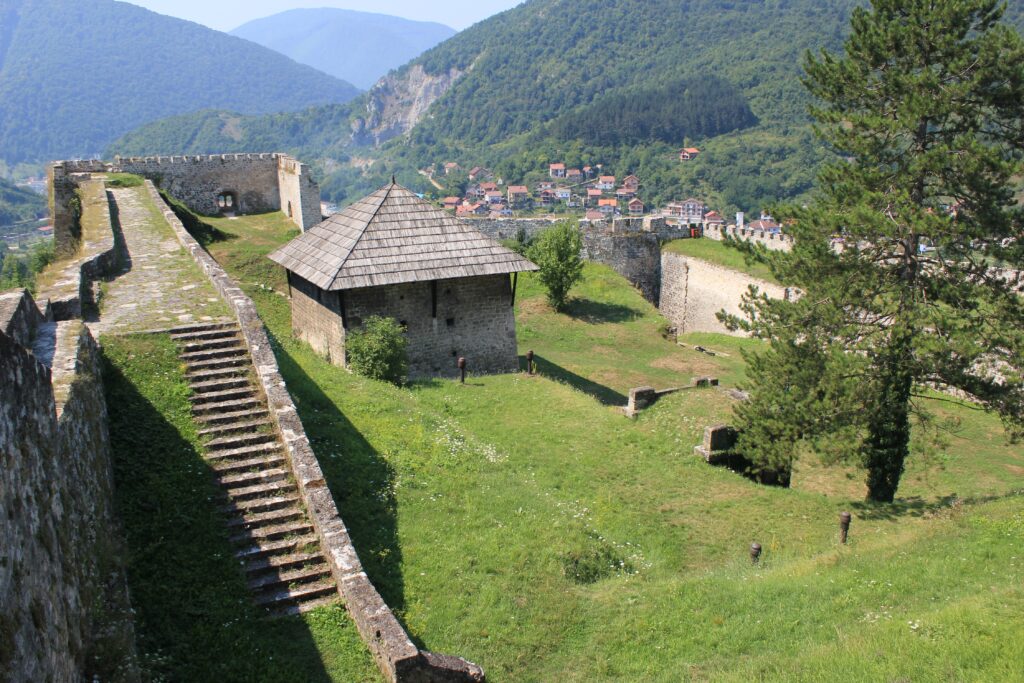
A stone-carved shield on the fortress walls indicates that in 1421 Jajce became the seat of the kingdom that lasted between Tvrtko II and King Tomašević’s rule. The walled fortress is open for visitors and the wall walks provide phenomenal views of the surrounding area.
Pliva Waterfall
Locals claim this waterfall is among the 12 most beautiful in the world. It’s on the official site of the tourism association. Who has actually ranked it 12th is never mentioned. The important thing here is that this waterfall is most definitely stunning and it gives Jajce its most unique brand. In the centre of the town, it cascades 21m into the Vrbas River. It may not compare to Mostar’s, but a diving competition is held on the first weekend of August every year.
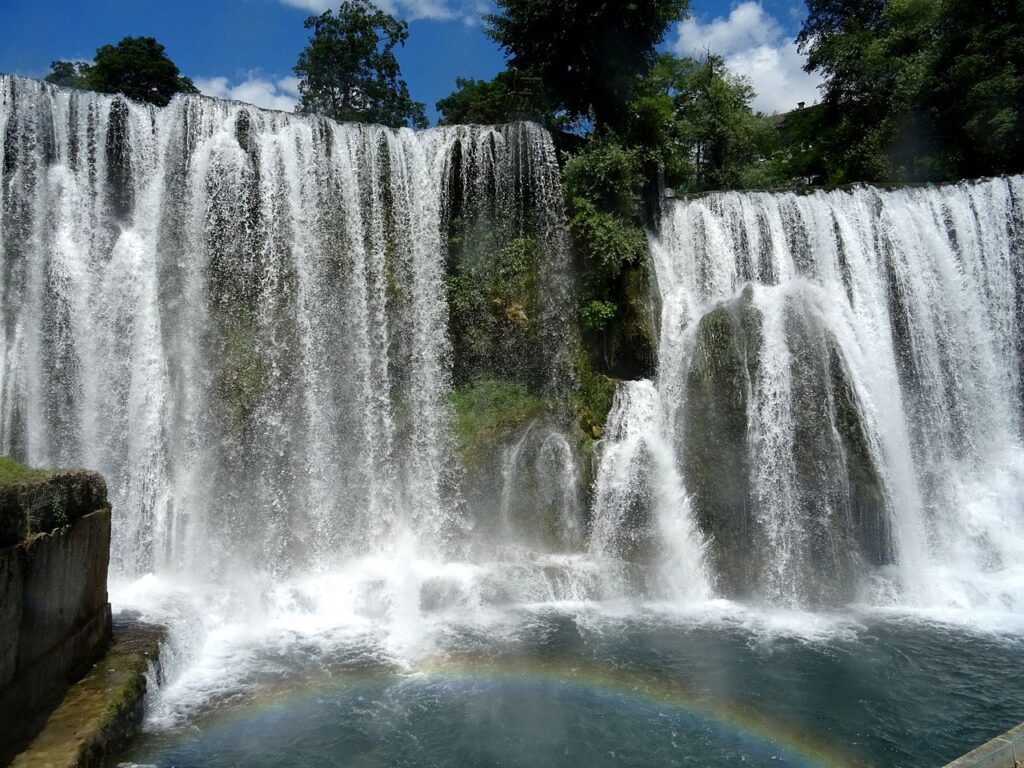
The best view for a photograph is from the bridge at the southwestern entrance to Jajce from the Donji Vakuf direction. Alternately, you can check it out from down below on the viewing platform (4/2KM adult/child) opposite the base of the falls. Expect to get a little wet.
Kravica Waterfalls
Bosnia and Herzegovina is a country of mountains and water. Only a hop, skip and a jump from Međugorje, Ljubuški and Čapljina, Kravica is a remarkable waterfall on the Trebižat River and a great spot for a picnic and a swim. If that’s not enough you can go on a canoe safari on the Trebižat just a few kilometres down the road.
Stretching over 100m across and tumbling down 25m, Kravica is one of the largest waterfalls in Bosnia and Herzegovina, and the most impressive. A natural pool has been dug out at the base of the falls by the constant rush of water. It is a favourite local swimming spot with picnic area, restaurants, cafés and even a place to pitch a tent. Bring a camera when you visit; seeing something as stunning as that is not an everyday occasion.
During the summer months, it can be quite crowded and noisy – it’s a place where many people gather to beat the heat, and the restaurants are in close proximity to the waterfall and swimming areas. If you’re in the mood to explore, you can take a 20-minute walk or an electric boat for 20KM to the smaller waterfall nearby, Mala Kravica.
Lukomir
The village of Lukomir is perhaps the finest example of a highland village in Bosnia and Herzegovina; it is the highest and most isolated permanent settlement in the country at 1,469m. The village, with its traditional architecture, has been deemed by the Historical Architecture Society of the United Kingdom as one of the longest continually inhabited villages in all of Europe. The stone homes with cherry-wood roof shingles mark a practice that can no longer be found elsewhere on Bjelašnica. The villagers are mainly shepherds who live off the sale of sheep products.
Lukomir is known for its traditional attire as well, and the women still wear hand-knitted costume styles that have been worn for centuries. Electricity was introduced to the village and running water installation was completed in 2002. Access to the village is impossible between the first snows in December and late April, and sometimes even later, except by skis or on foot.
There is magnificent hiking in the area along the ridge of the Rakitnica Canyon, which drops 800m below. This is the least-explored canyon in southern Europe. It stretches 26km and feeds the Neretva River in Herzegovina near Konjic.
Rakitnica is a natural wonderland. Hundreds of thousands of years of tectonic shifts have created the steep limestone walls of Visočica and Bjelašnica mountains. The crystal-clear river below is fed by the melting snows and the hundreds of underground aquifer systems, making Rakitnica River water potable for the entire length of the canyon. Thirty-two endemic species of plants, flowers and trees can be found in this tiny region of the Dinaric Alps.
Međugorje
The story of Međugorje is well known to most Catholics. Ever since 1981, when six teenagers reported that they had seen an apparition of the Blessed Virgin Mary, Queen of Peace, in the hills between here and the village of Bijakovići, this sleepy Herzegovinian town has become the second-largest Catholic pilgrimage site in the world. There has been much controversy over the legitimacy of the visions, but in May 2019 the Vatican finally recognised it as an official pilgrimage site. Now faithful from all over the world are flocking to visit this sacred spot like never before, and according to many accounts, miracles are a regular occurrence.
As mentioned above, in 1981 six teenagers were playing together in the hills between Međugorje and Bijakovići. It was on this barren hillside that the Virgin Mary allegedly appeared and spoke to them. When the children told their parents, their first reaction was, of course, scepticism. The apparitions, however, did not cease. She appeared again and again, and soon made believers even out of the most vocal of critics. Since then it is estimated that more than 15 million people have visited this tiny place. The Virgin Mary is still said to appear every day but only to one of the teenagers.
A blue cross marks the bare mountain, now called Apparition Hill, where the children first saw her. A well-worn footpath on Cross Mountain, lined with Stations of the Cross, has been trekked by visitors from every corner of the globe. Many make the 30–60-minute trek barefoot, regardless of the fact that it is extremely rocky and relatively steep. The large cross planted on top of the hill is said to have been built to celebrate the 1,900th anniversary of the death of Christ, but it is more likely that it was built in 1934 to keep away the plague that had devastated several areas in the region.
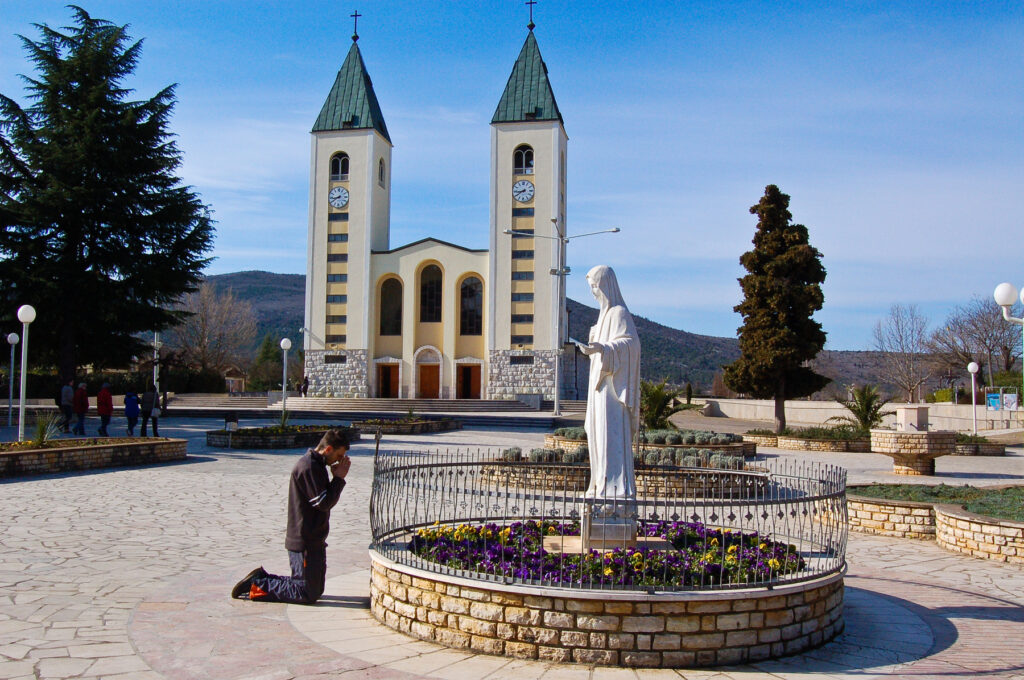
The village of Međugorje has become quite commercialised. The capacity to receive tens of thousands of guests at any given moment has turned the once dead main street into a souvenir-shop bazaar. Every few metres there are shops selling crosses, rosaries, statues, pictures, posters, jewellery – you name it, it’s there. It is easy to find internet connections, good information, guides in most European languages, and probably the best general service in the country. With that much practice, they’ve got it down pat.
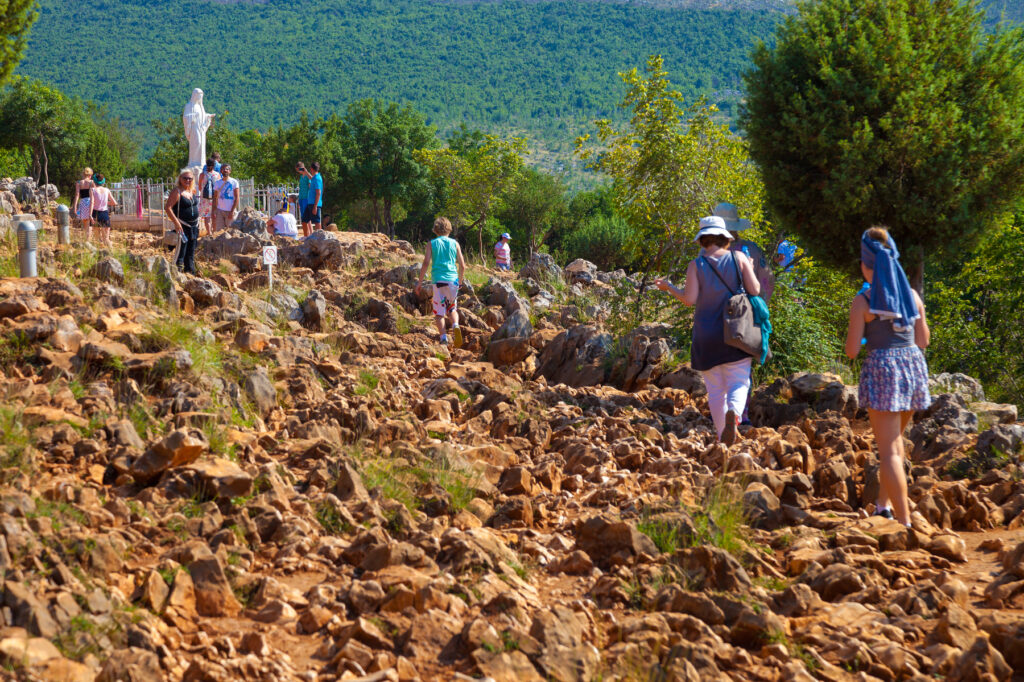
The main church, St James’s, is in the middle of town. Bear in mind there is a conservative dress code that forbids shorts and dresses above the knees and sleeveless shirts if you plan to enter. Whether or not there is a Mass on, the square around the church is still bound to have people sitting, praying and contemplating. There will be something going on every Catholic holiday and saint’s day. Just up the road is the even smaller village of Bijakovići. Despite the massive influx of tourists and pilgrims, it has managed to retain much of its original old Herzegovina style.
Mostar
In the grand scheme of European tourism, Mostar is largely considered as just a day-trip destination from neighbouring Croatia and Montenegro or a quick stop-off when travelling to Sarajevo. While this has indeed positioned it as one of the most-visited cities in BiH, it is safe to say most tourists hardly scratch the surface of Herzegovina’s enchanting capital city. Those that give it more time, or at least an overnight, will be rewarded with the magic of the town mostly to themselves and the opportunity for countless other cultural and adventure-filled excursions around its immediate vicinity.
What to see and do in Mostar
Stari most
No matter how many times one does it, crossing the Stari most (Old Bridge) always seems to be an exciting experience. This single-arch stone bridge is an exact replica of the original that stood for over 400 years, and that was designed by Hajrudin, a student of the great Turkish architect Sinan. The Halebija and Tara towers have always housed the guardians of the bridge and during Ottoman times were storehouses for ammunition. Year round, though especially during spring and summer, you can catch some of the daredevils from the Bridge Divers’ Club jumping off the bridge from a height of 23m straight into the Neretva.
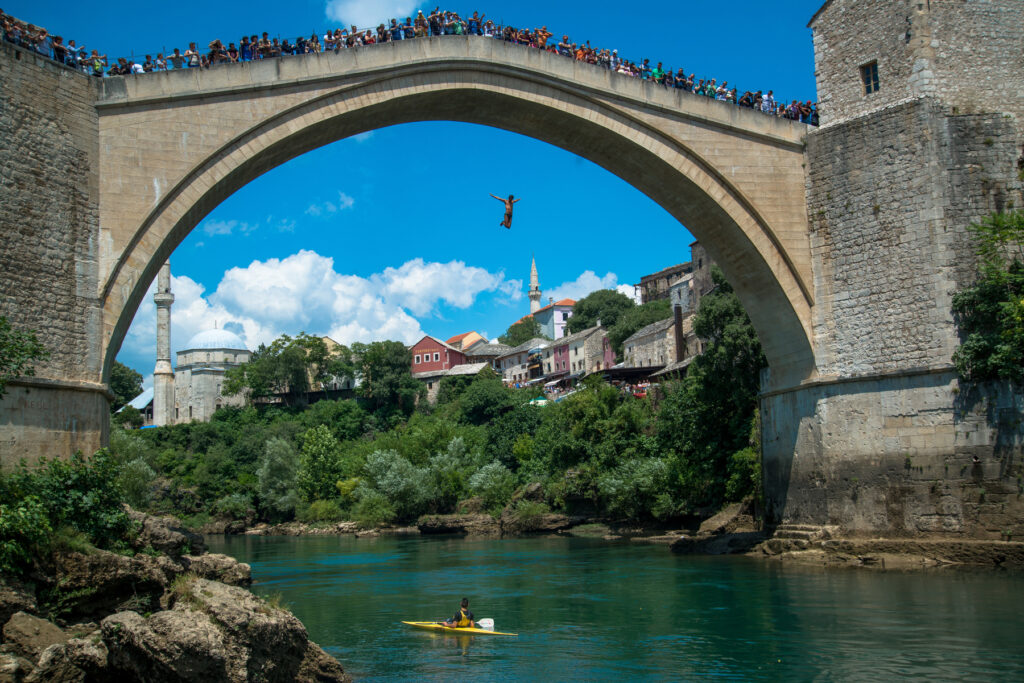
Don’t miss the Stari most Museum, which is housed in the Tara Tower. Upstairs are a few exhibitions with excellent views of the bridge on top. The stairs down to the right lead to the underbelly of the Old Bridge and provide a fascinating peek at how the old structure was built. At the end of a labyrinth is a small viewing room with a UNESCO film by Bosnian film-maker Jasmila Žbanić about the reconstruction of the Old Bridge.
Koski Mehmed-Pasha Mosque
Mostar is unique in that it has opened many of its most precious and historical mosques to be visited and viewed by tourists. This one was built in 1617 and although heavily damaged during the last war, it has been fully restored. Visitors are permitted to enter the mosque, and even climb the minaret for a phenomenal view of the Stari most.
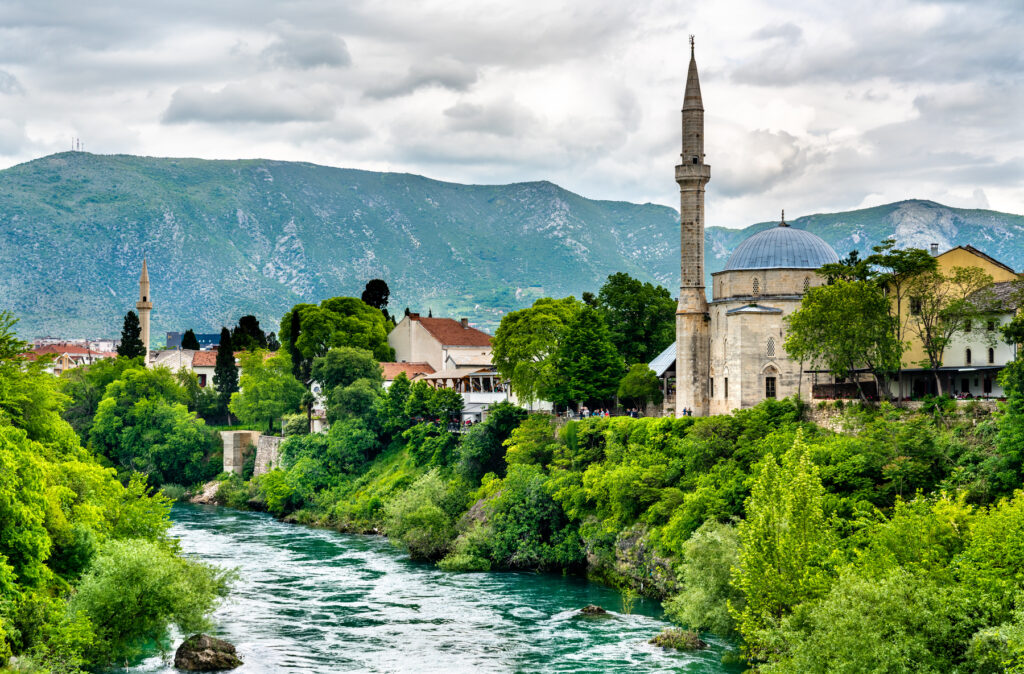
You must take your shoes off before entering a mosque. As this mosque is open for visitors, it is not required that women wear a headscarf. On the same premises you will find a madrasa, which was built in the 17th century. It is recommended to visit in the morning in order to avoid the crowds.
Muslibegović House
Arguably the finest example of Ottoman architecture in BiH, the Muslibegović House is one of Mostar’s premiere attractions. The house itself is an exquisite model of 17th-century Ottoman architecture. The original house was built in the 16th century but it was later expanded and upgraded.
The owners have adopted the Spanish model of national monument homes and opened the house as a boutique bed and breakfast. The museum visit is a 20-minute tour of the middle part of the house (the other parts house the guests) with interesting historical facts and anecdotes. The true experience, however, is to spend the night and live like a beg for an evening.
Bišćevića House
Built on a side street that leads down to the Neretva River, this 17th-century Turkish house, partially supported by 5m-long pillars, is one of three well-preserved Ottoman homes to visit in Mostar. The home is still owned by the Bišćević family, who proudly give guided tours. The main attraction is the large gathering room, or divanhan, which was designated for men to talk business. It is preserved in original Turkish style.
Kajtaz House
A bit off the central circuit of the old town this is the best-preserved Turkish-style house in Herzegovina, a UNESCO World Heritage Site, and now protected by law as the finest example of an Ottoman home. Fortuna Tours near the Old Bridge can arrange a tour guide, or you can wander up to the house yourself. The host does not speak English, but she will gladly walk you through the old-style kitchen with all of its original and functional furniture and equipment. The garden terrace, shadowed by Hum Mountain to the west, has plenty of seats to sit back and enjoy the hostess’s homemade juice from roses – it is absolutely amazing and nearly impossible to find anywhere else. The upstairs floor is laid out in typical Turkish fashion.
There are separate sleeping rooms for the women, all with bathing areas within the room. The women also had a large sitting room where they would receive guests and entertain. The men were situated on the southern side of the house, but the man of the house had free range to visit his many wives. The wooden wardrobes and large chests are carved with intricate oriental designs. In the open foyer upstairs, you can try on a set of traditional attire (men’s and women’s) – a great photo opportunity. The fact that the house is still lived in adds to its charm.
Karađoz-begova Mosque
This is the most important and significant of all sacred Islamic architecture in Herzegovina. The mosque was heavily damaged during the war and its minaret completely destroyed by tank and artillery rounds from the Croatian forces. The mosque was completed in 1557. Its designer was Kodža Mimara Sinan, a great Turkish architect, and the work was probably carried out by local and Dalmatian stonemasons.
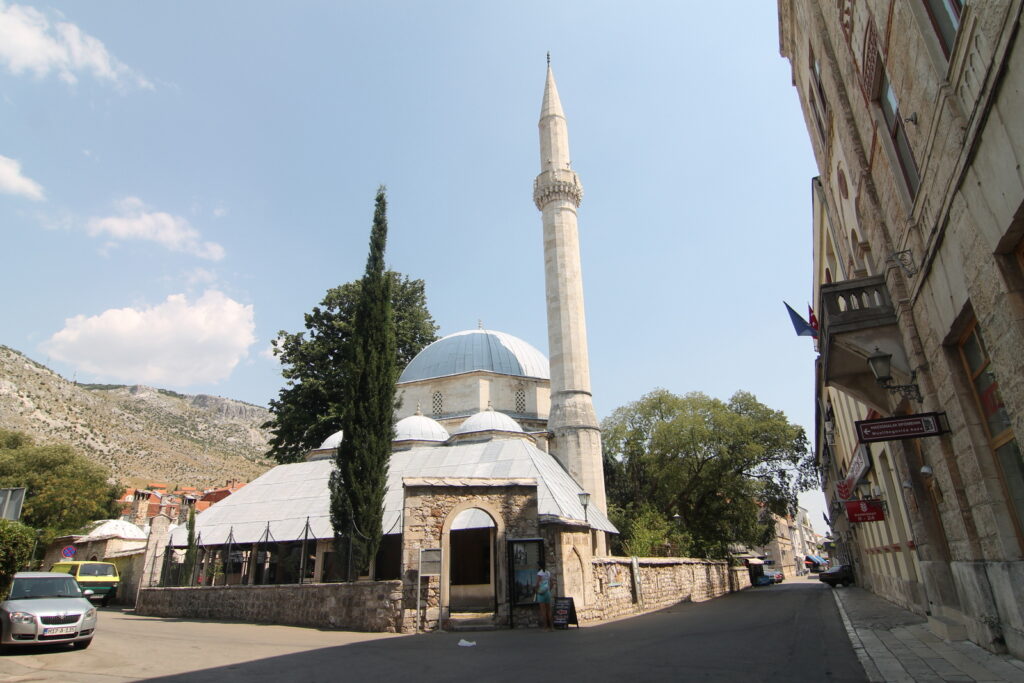
The interior is marked with typical Ottoman characteristics but has lost much of its detailed paintings from water damage after its destruction. It opened to visitors again a few years ago after being under construction for a long time and visitors are now allowed to climb to the top of the minaret.
Mount Olympus National Park
Olympus (Όλυμπος) originally meant ‘mountain’, and scattered around the Mediterranean some 20 other mountains bear the same name. But this, the highest peak on the Balkan peninsula at 2,918m, its summits wreathed in cloud, its precipices echoing with thunder, was always the Olympus, the abode of Zeus and his argumentative clan. In Homer, the palaces of the gods lay in the mountain’s ‘mysterious folds’.
At the tallest of its 52 peaks, in ancient times known as the Pantheon (now more prosaically called Mýtikas, ‘nose’), where the sun always shone and the air was too thin for mortals to breathe, the deities would gather to hear Zeus arbitrate on his Throne, the sheer armchair (and greatest climbing challenge on the mountain) today better known as Stefáni (2,902m). Olympus was one of the last famous European mountains to be climbed (in 1913) – not because of Zeus’s thunderbolts, but because of the armatoloí (irregular militia) and kidnapping klephts who haunted it until Macedonia became part of Greece in 1912.
In 1938, high Olympus and its deeply wooded eastern slopes were designated Greece’s first National Park; in 1981, UNESCO included it in the list of World Biosphere Reserves. It’s famous for its birds – some 156 species have been counted here, and some 1,700 Mediterranean and Central European plants have been found (25% of all the flora in Greece, including the rare Bosnian pine), and of the rare little plants above the tree line 23 species are unique to Olympus. The lions that attacked the camels in Xerxes’ army are gone, but Zeus’s golden eagles still float overhead, and wolves, jackals, wild cats and deer roam in the woodlands. Litóchoro (Λιτόχωρο) on the east slopes, the classic gateway to Olympus, is in a superb setting, just 5km up from the coast.
Sarajevo
If there is one place in continental Europe that symbolises the crossroads between East and West, Sarajevo would have to be it. It is here that the Byzantine and Ottoman empires to the east and the empires of Rome, Venice and Vienna to the west brought their culture, traditions and religions. Only a few spots on earth can boast of hosting an Orthodox and a Catholic church, a mosque and a synagogue, all in the same square.
This city, in particular, epitomises the centuries-old struggle against outside forces and the ability to assimilate all of these influences into one of the most diverse indigenous cultures in Europe. Whereas other parts of Bosnia and Herzegovina may still be burdened with ethnic strife, this city’s long-standing tradition of multi-ethnicity enables it to thrive in its diversity. A walk through Sarajevo is a walk through the past.
What to see and do in Sarajevo
Old town
Baščaršija, as the old town is called, is the far east corner of Sarajevo and is the part of town that displays its oriental flavour. This was the centre of life during Ottoman rule from the 1440s until the empire collapsed here in 1878. It is famous for the craftsmen of every kind who still hammer away at making authentic handmade goods as their forefathers did centuries ago. Sebilj square is where the main public fountain is located in the old town. It has been refurbished after falling into disrepair during and after the war. The square is always filled with pigeons and for 1KM you can buy a cup of corn, which will be completely covered by the little flying creatures in seconds. The coffee and sweet shops near Sebilj all serve Turkish coffee with rahat lokum (Turkish delight).
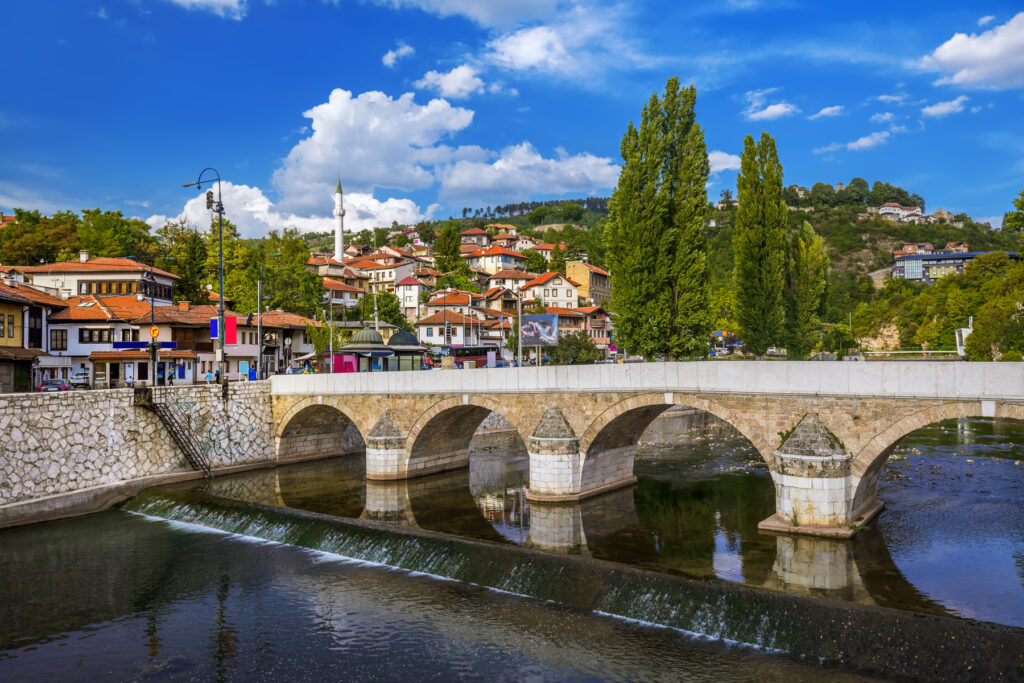
Just outside the square is Kazandžiluk, the famous coppersmith trading place on the west side of Baščaršija. Here you’ll find great antiques, hand-beaten copper dishes and oriental décor. It may seem strange to find shell cartridges left over from the war on sale, but Sarajevo was hit with enough artillery and anti-aircraft fire that if you stacked them they’d reach the moon.
Next to Kazandžiluk street is Baščaršijska džamija or the marketplace mosque. Its official name is Havadja Durak’s Mosque (Džamija Havadže Duraka) and it was built in the 1530s. This mosque often has the imam singing the call to prayer from the minaret, the mystical sounds of which resonate throughout the čaršija (old Turkish quarter).
Ferhadija
Ferhadija walkway is perhaps the most charming part of town. It stretches from Sebilj in the centre of Baščaršija all the way to the Eternal Flame in the city centre. The lower part of Ferhadija is officially called Sarači, but it is the same walkway that changes name near the Austro-Hungarian part of town. Ferhadija is almost always filled with locals strolling through town, window shopping, chatting or just enjoying the pleasant energy of walking up and down.
Along the Ferhadija is Morića Han. It was known as a caravanserai, meaning ‘castle of the caravans’. The function of the han (inn) was to provide warehouse space, stables and accommodation for traders coming from near and far. It was built by the Gazi Husrevbegova fund and got its name much later from the inn operator Mustafa Morić. In the 1970s it was renovated and restored as a tourist attraction. It now has several restaurants and cafés, an oriental rug shop and office spaces on the first floor where the inn rooms used to be. It’s a lovely place to sit and have a drink in the courtyard and imagine how it used to be.
Old Orthodox church
The old Orthodox church (Stara pravoslavna crkva) is often referred to simply as the old church. It is estimated that the church was built in 1539–40. The Orthodox Church grew considerably in Bosnia from this point on. The church caught fire several times. The turret by the church had a dome until the first half of the 20th century but, following the reconstruction designed by architect Dušan Smiljanić, the turret became the simple form it is today.
The museum (free entrance) has many icons and frescoes from that era, and even earlier relics brought to Sarajevo from other Orthodox lands. The museum was arranged by Jeftan Despić, the sexton of the old church. Be sure there isn’t a service in session before entering.
Gazi Husrev-beg Mosque
Gazi Husrev-beg Mosque is the most significant Islamic building in Bosnia and Herzegovina. It is perhaps the finest example of Ottoman Islamic architecture on the Balkan peninsula. The Persian architect, Adžem Esir Ali, was the leading architect of his time within the empire and his mosque design favours the early Istanbul style. The original structure was built in 1530 but was largely destroyed when Eugene of Savoy plundered Sarajevo in 1697. It was fully restored by 1762 but was destroyed again in 1879. The last reconstruction of Gazi Husrev-beg Mosque was in 1886.
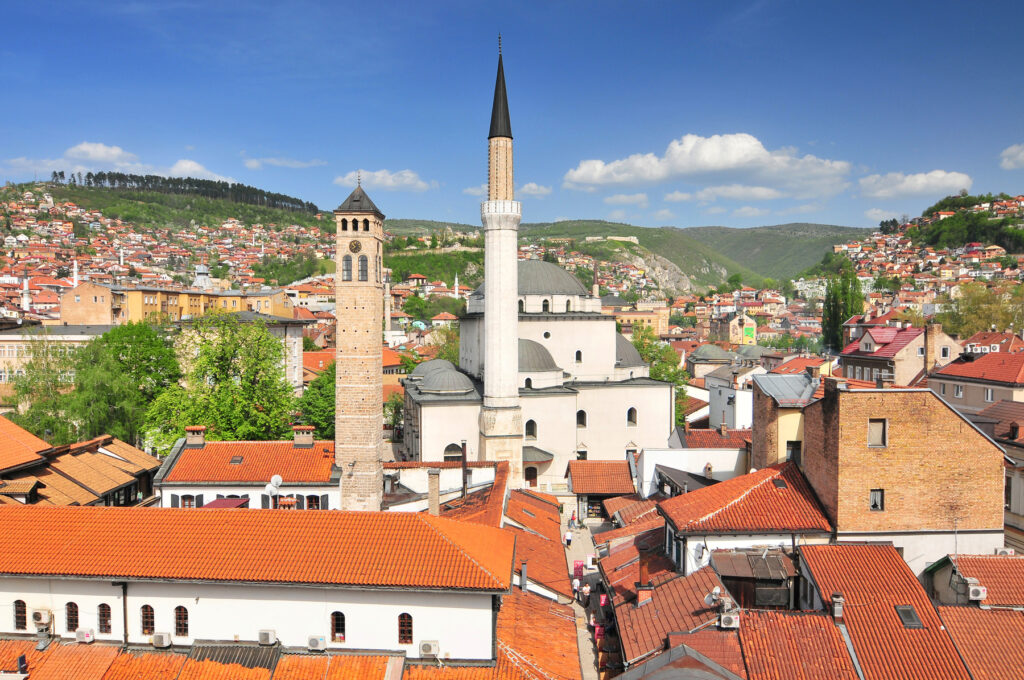
Although it was damaged during the last conflict, most of its precious original oriental design survived unscathed. It is important to stay to the side during prayer time as it is the main mosque in the city and is usually filled by local worshippers. No need for shyness, they are used to visitors and simply expect them to be courteous and follow the rules. Directly across the stone walkway is the Gazi Husrev-beg Madrasa (Sarači; free entrance). A madrasa is an Islamic educational institution and this one was founded on 8 January 1537; it is now often the location for Islamic art exhibitions.
Jewish quarter
Through a small passageway between Ferhadija and Bašeskija streets is the Grand Yard (Velika Avlija), also known as the Jewish quarter. The Jewish Museum is located here. The Sephardic Jews that settled in Sarajevo quickly established themselves as tradesmen within the Ottoman Empire and the first temple to be built was the Stari Hram in 1581, less than a century after the Jews were expelled from Spain. The old synagogue, or Il Kal Grandi, was also destroyed in 1697 and again in 1788.
As the Jewish community increased, there were growing calls to build a larger place of worship and the old temple was expanded in 1821. The upper floors were used by the women and the ground floor by men – the same tradition is practised by Muslims.
Christian and Muslim quarters
Religious harmony has always been the backbone of Sarajevo’s multi-ethnic community. The Catholic cathedral was completed in 1889 when the Austrians had gained full control of the city. It is the seat of the Vrh-Bosna archbishop and is dedicated to the Most Holy Heart of Jesus. The cathedral was designed by the architect Noble Josip Vancaš in neo-Gothic style, with some elements of Romanesque. It is very similar to Notre Dame Cathedral in Dijon. The Pope led mass here during his visit in 1997. Don’t be surprised to find Sarajevo’s youth gathering on the steps of the cathedral; it has always been a popular (and central) place to hang out or wait for a friend. The cathedral is also open to visitors free of charge when there is no mass taking place.
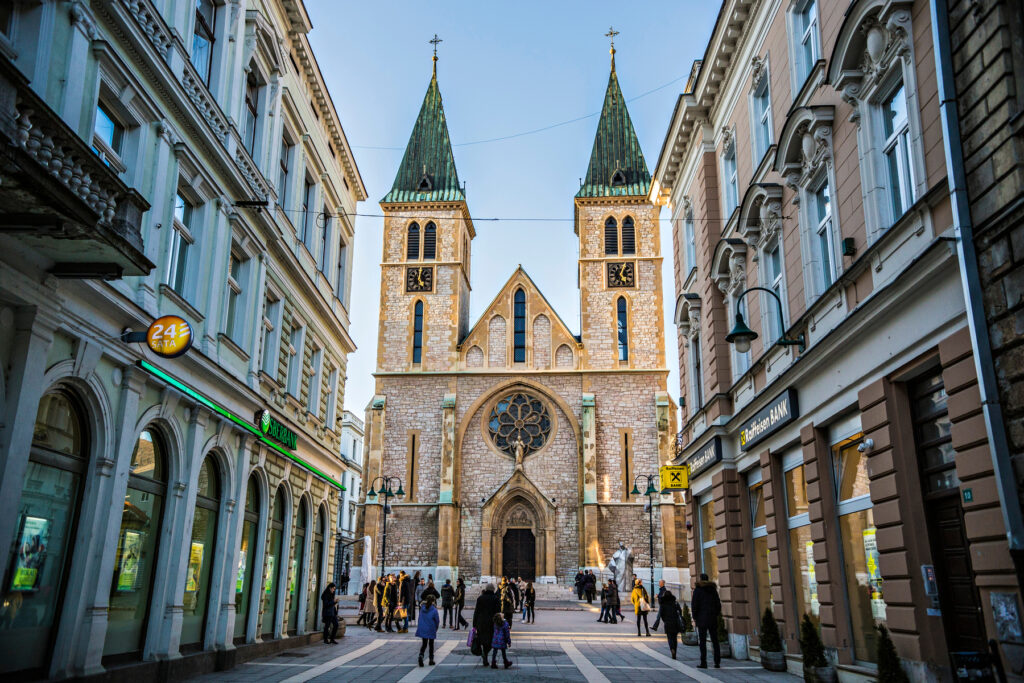
Behind the cathedral near the music school is the Bosniak Institute, dedicated to the history of the Bosnian Muslims, or Bosniaks. It’s an interesting place to see old documents and read about famous Muslim writers and historians, and it offers a fascinating insight into the national identity of the Bosnian Muslims. Down the street is the new Walter Defends Sarajevo Museum. Opened by Sarajevo Film Centre in 2019, this tiny museum filled with wax figures, stage reconstructions and Walter Defends Sarajevo playing on repeat 8–12 hours per day pays homage to what was one of the most popular films produced in Yugoslavia that many have come to consider a symbol of Sarajevo.
National Library/City Hall
This is the most significant architectural monument in Sarajevo and in 2014, 22 years after it was destroyed, its reconstruction was finally completed, and it is worth visiting. The entrance fee allows full access to the building and all the time you want to admire the pseudo-Moorish and other architectural styles. There is a permanent exhibition in the basement, and there are sometimes other special exhibitions or concerts.
Galerija 11/07/95
Gallery 11/07/95 is not only one of Bosnia and Herzegovina’s most professionally curated galleries, but one that will humble you for its moving and thoughtful content. With a multitude of media, the gallery depicts the horrifying events that led up to the 11 July 1995 genocide in Srebrenica and, just as important, its aftermath. With its vivid photos from award-winning photographer Tarik Samarah, videos, interviews with survivors and the wall of death (that names each of the more than 8,000 victims), this is an experience you shouldn’t pass up.
Sarajevo is a fun and vibrant city. This gallery is not meant to be a downer to anyone’s good time, but a solemn reminder of the depths of human suffering.
Neum
Bosnia and Herzegovina is proud to have its own little slice of the Adriatic, even if it is only a 24km strip. The Adriatic Sea from Split to Dubrovnik is crystal clear and simply gorgeous, Neum included. The closed bay here, shielded by Pelješac Peninsula, is protected from many of the strong winds of the open sea. Most of the town was built during Yugoslav times as an isolated retreat for the communist elite.
Although Neum can’t compete with the likes of Dubrovnik, Ston and Makarska, it does offer good value for a seaside holiday. Some of the infrastructure is rundown in comparison and even incomplete but year by year the tourist offer at Neum improves. During the summer months, it is quite crowded – this is not the place to go looking for a peaceful cove or empty beach.
Neum is a holiday resort town, though you have to be prepared to cut it some slack. There is not much on the cultural ‘to do’ list, but there is plenty of fun and sun to be had. Besides swimming and sunbathing, there are boats for hire at several places on the beach, and from Neum, you can jump on the excursion boats that travel up and down the Adriatic coastline.
Watersports are generally cheaper here than in Croatia. Scuba-diving gear, parasailing equipment, boats and jet skis can be hired on the beach, and the bay is perfect for a fun day on the water. Some of the major hotels can arrange watersport hire from the beachside outlets. Dubrovnik is only an hour’s drive from Neum, and the peninsula of Pelješac is a stone’s throw away. From Orebić on Pelješac you can catch a ferry to the beautiful island of Korčula.
For those looking for culture, you must head towards the hinterland. Behind Neum you can find the village of Hutovo and the ancient ruins of Hadžibegova Kula Fortress, used by the Turks to defend their western front. The holy site of Svetište Kraljica mira is a shrine to the Queen of Peace in Hrasno. It has mostly local significance but those who have come on a pilgrimage often pay a visit to this tiny hinterland shrine. Hutovo Blato, Ljubuški and Međugorje are all within an hour’s drive of Neum for day trips. Mostar is just a bit further away.
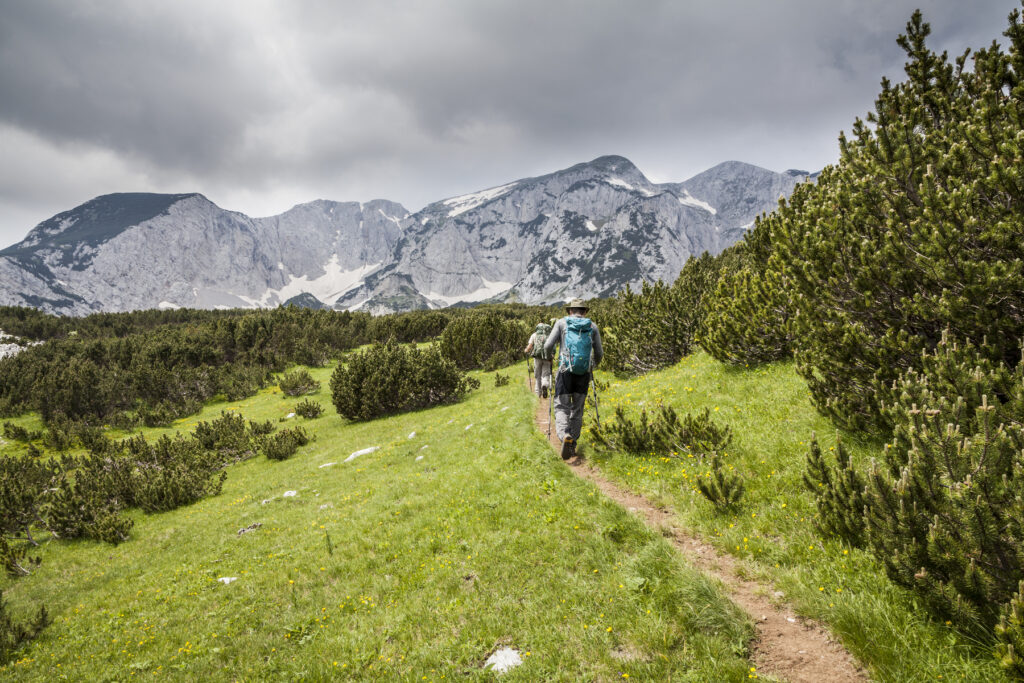
Sutjeska National Park
Sometimes referred to as the ‘Yosemite of the Balkans’, Sutjeska is the oldest national park in Bosnia and Herzegovina and home to the country’s highest peak, Mt Maglić (2,386m). It’s also home to more biodiversity than anywhere else in BiH, boasting varied, stunning landscapes from rocky cliffs to rolling meadows, the 75m-high Skakavac Waterfall and one of the last remaining primeval forests in Europe, Perućica. Sutjeska is a true wonderland for lovers of the great outdoors and thanks to EU-funding over the past several years, signage and facilities and activities within the park have drastically improved.
There is even a tourist information centre just next to Hotel Mladost. It is also the main trail head for the Via Dinarica so even more hiking information can be found on viadinarica.com.
Nature aside, Sutjeska is also incredibly significant when it comes to history and the formation of Yugoslavia as it’s where the critical Battle of Sutjeska was fought (and won by Tito’s Partisan forces) during World War II. This has been memorialised in Tjentište, Sutjeska’s main village, where you can visit the ‘Valley of the Heroes’ and admire one of the most iconic spomeniks found in former Yugoslavia. One of Bosnia and Herzegovina’s best music festivals also takes place in Sutjeska every July, OK Fest, positioning it as a national park that truly has something for everyone.
Related books
For more information, see our guide to Bosnia and Herzegovina:
Related articles
From mountain biking to white-water rafting, Bosnia and Herzegovina has it all.
These fantastical memorials serve as a poignant reminder of the lives lost during the National Liberation Struggle.
